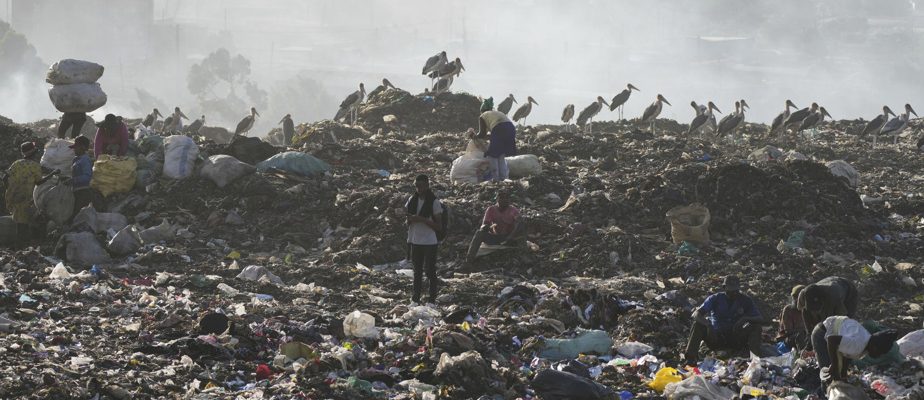2.3 million tonnes more each year

INFOGRAPHICS THE PRESS
What is in electronic waste?
Between 2010 and 2022, the quantity of electronic waste increased by 2.3 million tonnes per year worldwide, from 34 million tonnes to 62 million tonnes in just 12 years. Half of this waste consists of metals. “The world is experiencing significant electronification, including digital transformation, with technologies that are profoundly changing the way we live, work, learn, socialize and do business,” the report states at the outset. Global E-waste Monitor 2024 produced by the United Nations Institute for Training and Research and the International Telecommunication Union.
Small and large waste

INFOGRAPHICS THE PRESS
Small and large waste
Electronic waste includes a wide range of products, such as mobile phones, tablets, household appliances, televisions, computer screens or photovoltaic panels. The increasingly popular electronic cigarette falls into this category. The report indicates that the e-cigarette market was valued at US$22 billion in 2022 and is expected to grow by 31% annually by 2030. 844 million e-cigarettes were sold in 2022, with an average weight of of 50 grams, battery included. We observe a growing quantity of electronic cigarettes among the waste listed by the Global E-waste Monitor.
Deficient recycling

PHOTO MARTIN LEBLANC, LA PRESSE ARCHIVES
Electronic waste in a Ghana dump, April 2016
The recycling rate of this waste unfortunately does not follow the same growth curve as that of production, specifies the report unveiled on Wednesday. Less than a quarter (22.3%) of e-waste generated in 2022 was properly recycled, and this proportion is predicted to decline to 20% by 2030. Production of this waste has grown five times faster than capacity recycling, which worsens the problem over the years. A large part of this electronic waste ends up in poor countries and ends up in the scrapyard because it does not function properly.
The richest produce more waste

INFOGRAPHICS THE PRESS
Who produces the most waste?
“There is a link between the per capita purchasing power of a region and the amount of electronic waste it generates. In general, higher-income regions tend to generate more e-waste because they consume more goods,” the report said. A European, for example, generates on average seven times more waste than an African. The report notes that the amount of electronic waste tripled between 2000 and 2019 in Canada and is expected to total 1.2 million tonnes in 2030.
Resource extraction does not stop

PHOTO BRENT LEWIN, BLOOMBERG ARCHIVES
An excavator loading raw ore into a dump truck at the Oyou Tolgoi copper and gold mine, Mongolia
The value of metals found in electronic waste is estimated at $91 billion; however, the value of recycled metals in 2022 does not exceed $28 billion. Copper, gold and iron are among those that can be recycled most easily, which would reduce pressure on the extraction of these resources. Remember that according to a recent UN report, it is estimated that the extraction of planetary resources will increase by 60% by 2060, which will lead to an increase in greenhouse gas (GHG) emissions and a degradation of biodiversity in several regions of the world.
Read the UN report (in English)
